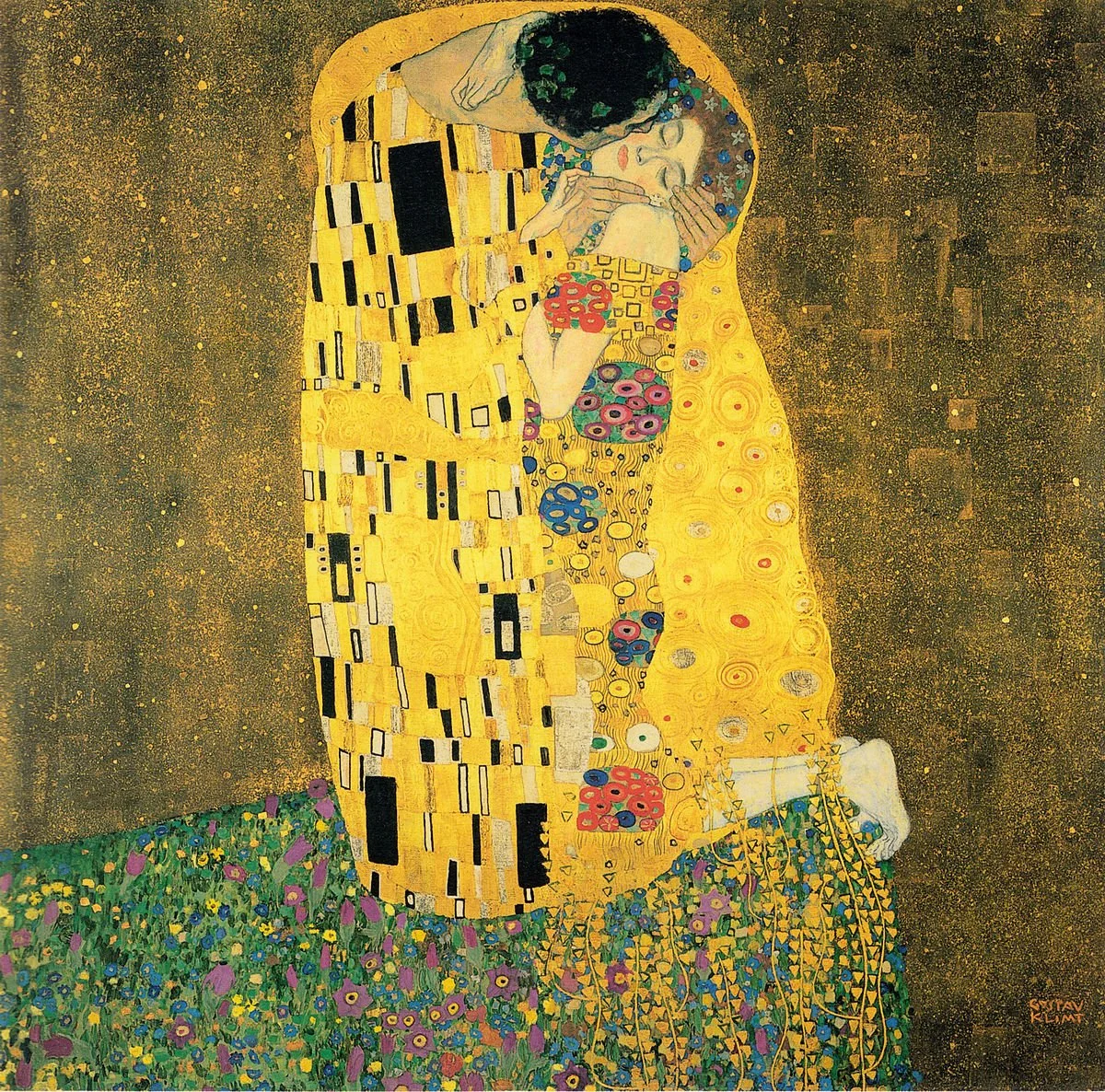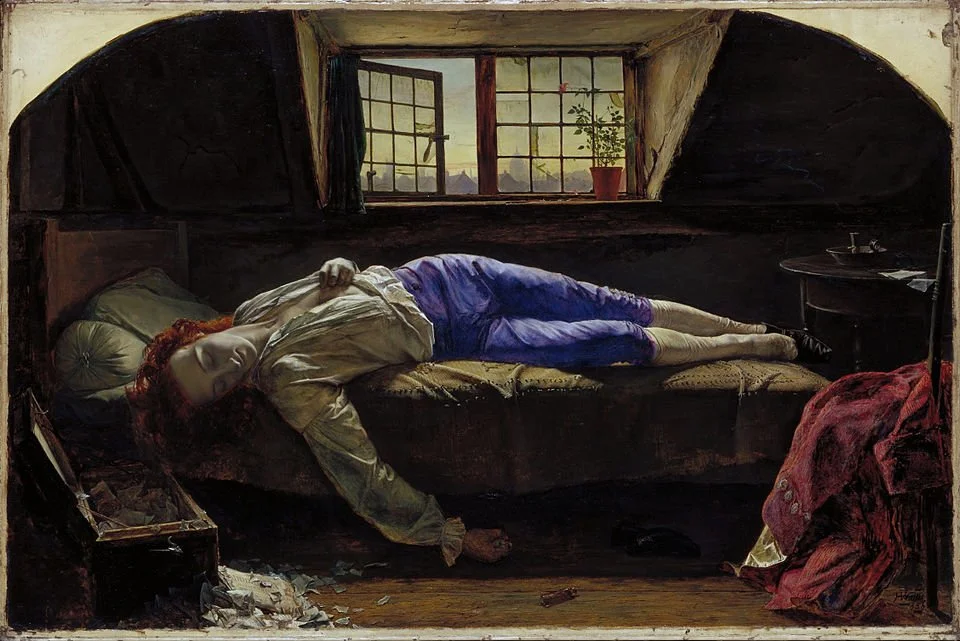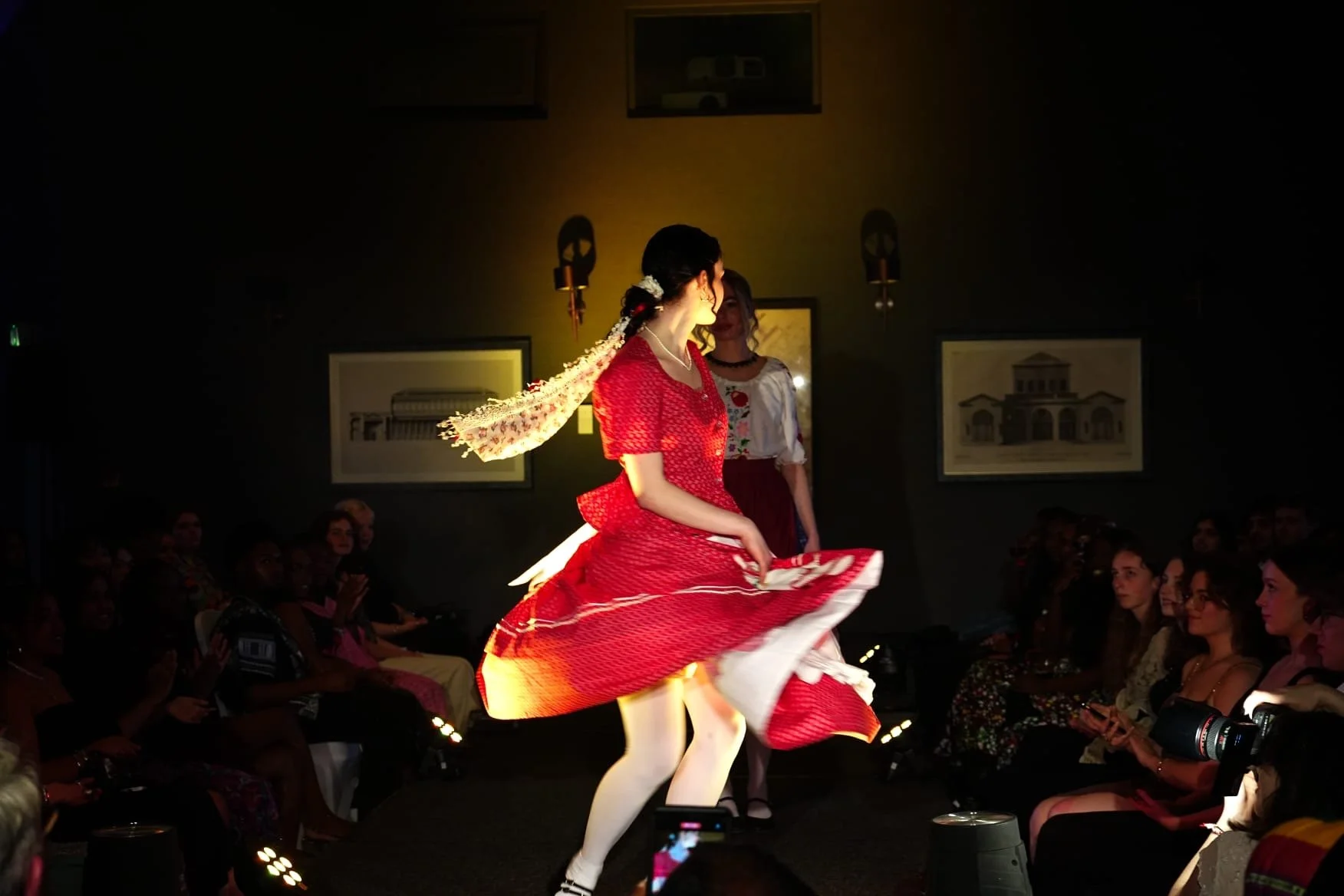Art Block, or: Love and Hate, Life and Art
Words by Kordélia Mészáros
Edited by Myfanwy Greene
If you’re an artist or have some sort of creative practice, you have probably experienced an ‘art block’. If you have no idea what an art block is, well, I’m jealous, but according to Google it is a period where an artist struggles with a lack of motivation or inspiration, therefore experiencing a ‘block,’ which prevents them from producing anything creative. Art block can seem like a small and frustrating, but overall inconsequential, part of life. However, when your whole life revolves around art, this small thing (like an annoying fly that won't stop coming into your house on a summer’s day) risks becoming all-consuming.
Gustav Klimt, The Kiss (Der Kuss), 1907-08.
You’ve probably experienced all-consuming emotions before. The most notorious of these being love and hate. These are intertwined emotions that go hand in hand, just like life and art. I attended the Norman Rea Gallery's 'Feminist Mediations on Modern Love' panel on March 26th, and it made me think about how we view love, how I view love in my life too. I also realised that I felt very isolated - love in my life didn't feel like love, it felt like frustration, maybe even hate. I hated how I looked, I hated what I was doing, and equally, what I wasn't doing. I hated what I said in my seminars, I hated the poetry I wrote, and I hated the way I couldn't pick up a pencil and draw something.
Making art was what I was good at, what I loved, and what had defined my life for so long. Since university, I'd barely drawn anything, and I felt like I’d failed. Like I failed at love. The panellists said, but what does to fail at love mean anyway? Now, while this was about failing romantic love, not art block, I realised suddenly that I had personified art block, had made it into a person, someone who defined my life. It may sound silly but, if I can’t make art, then what do I have to show for myself?
For what is art if not my entire life?
Art about Life
Art mimics life, life mimics art. If we took a carefully curated snapshot of any moment in our lives, printed it out in high quality, painted it, framed it – I think we would all be art.
I'm not a person fully immersed in science - neither am I strictly religious and, despite doing a degree in English Literature and Art History, I wouldn't call myself an expert on either subject. However, I have gathered that each of our lives is something that doesn't occur often. The likelihood of something as seemingly simple as being born is four-hundred-trillion to one, which puts things into perspective. It makes me feel anxious; we are lucky to be here so we ought not to waste it. But it’s no wonder there is something in us that wants to create, to somehow prove that we existed, to show that we did something with all the emotions we are able to feel.
Art (be it painting, music, film, architecture or fashion) makes us appreciate life. We can observe the existence of others before us, interact with the minds and souls of others. We understand that others have lived, and still live in the world that we have, felt the same emotions, the same love and hate.
Life makes us appreciate art. The experiences we have make us attached to art. We see our emotions reflected in materiality, through acrylic paint strokes, the scenes of our lives stretch out on a canvas before our eyes.
Thomas Cole, The Voyage of Life: Childhood, 1840.
Thomas Cole, The Voyage of Life: Youth, 1840.
Thomas Cole, The Voyage of Life: Manhood, 1840.
Thomas Cole, The Voyage of Life: Old Age, 1840.
Art about Hate.
I sit at the river running through York on a sunny day and the water sparkles like glitter, the sky is clear and suddenly, I love this city. The next week it's grey and it's windy and I'm overwhelmed, and I hate this city, and I hate the river.
I am in my room that I haven't cleaned in months, I've had the worst week, I'm not sure how many times I’ve felt like crying. Am I wasting my life away?
Henry Wallis, The Death of Chatterton, 1856.
Wallis’ painting is exactly how I felt. I If you had taken a photo of me that moment it would probably look just like this, my tiny window open, wallowing dramatically in my hatred of everything, and wishing I could be better. I could hear my flatmates with their friend’s downstairs, laughing, getting drunk. The weather was the warmest it had been all year. That should’ve been the life I was living instead. I couldn’t shake the sadness out of me. Even though I love summer, I love the heat, I love my city. I hated it that day, I hated it so much and I refused to make art about it.
Unknowingly I made it anyway. I act out the scene depicted with perfect precision. My life becomes art whether I want it or not.
Art about Love
For this blog post, I searched up four things on Google:
Art about love.
Art about life.
Art about hate.
Art about art.
Unsurprisingly, most results came from the first search.
Why are we so obsessed with love? Why is it the only thing I'm trying so hard at and simultaneously falling flat on my face for? The most interesting art I’ve looked at has been about love. Just like this pesky art block that doesn’t leave me alone, love in the same way hasn’t left me alone either. I am fascinated by the way love consumes so much of our lives, including my own. Probably one of the reasons I love art so much is because so much of it is born out of, well, love.
John Everett Millias, A Huguenot, on St Bartholomew’s Day, 1852.
One of my favourite paintings is A Huguenot, on St. Bartholomew’s Day by John Everett Millias. The man is Protestant, and his lover is attempting to tie a white ribbon around his arm to mark him a Catholic. She fears his murder because of his faith. The mans intimate embrace and gentle smile communicates his love for her, yet he pulls the ribbon off his arm. His life and loyalty to his faith exist at the same time as his love for the woman. The sadness and hate infused by the looming religious conflict fuse with the sincere love of the couple, as well as his love for his religion.
One of the most famous artists that has lived, Vincent van Gogh, wrote to his brother in a letter, there is nothing more truly artistic than to love people.
For what is art if not love?
Art about Art
We make art about other art. We love something so much we must add to it, create something inspired by it or we hate something so much we must change it. In my module, ‘Iconoclasm: The Power of Images’, we talked about how Iconoclasm (image-breaking) can be viewed as an art form; by destroying an artwork you indirectly create new ones.
Maybe overcoming an art block in a way is not to create, but to destroy. Scribbling with black marker over a sketch, doodling a moustache on your favourite painting, tearing a canvas to pieces then stitching it together.
Marcel Duchamp, L.H.O.O.Q., 1919
Do I still have art block? Yes, actually. However, I feel better about not trying so desperately to make art, especially ‘good’ art. Asking for love, refuting hate, making art, living life, these are the same things for me. Maybe if you feel like I did, you need to let yourself live and breathe - your art is you. Recently I walked for the Global Runway fashion show. My life that night was definitely art. The grip that art block had me in loosened that night.
It’s a less threatening thing when you believe that life, existence itself, is art. In the panel, one of the panellists questioned - what is love if not a justification for existence? - does that not apply also to art? Our need to express our existence, that we have felt - we have lived and loved and hated every minute of it.
There is something artistic and worthwhile in just being.
So let yourself be.
Photo by @diana_photosfilms on Instagram, Global Runway 2025









